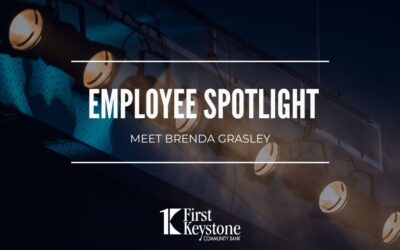April is Community Banking Month when we celebrate the relationship-building and dedication-to-community components that are integral to the community bank structure.
What is a community bank?
Community banks are generally defined as banking organizations with less than $10 billion in total assets, compared to national banks that can have $1 trillion or more in assets. Community banks are dedicated to partnering with the communities they serve, giving them the moniker of “relationship banks”. Most importantly, they are run by local directors and provide local loans with local deposits.
What is relationship-banking?
Community banks work within a limited geographic area allowing them to invest in their local communities where the bank’s knowledge of local families and their spending history, as well as a small business’ finances can help them adapt products and services to the customer’s individual needs.
What are the biggest advantages to a community bank?
You’re more than just a customer at a community bank. Community bankers live and work in the same neighborhoods as their customers, so they understand their needs. This can be especially helpful to small business owners or first-time home buyers. Community banks are owned privately allowing them to focus on the local community instead of capital markets. Local decisions are made by local people.
Who should bank with a community bank?
The typical community bank customer prefers doing business in-person rather than online. He or she values face-to-face transactions with tellers, customer service representatives or loan officers. Participating in the neighborhood economy also is an important factor to the community bank customer who values knowing their money will be invested locally. A friendly community banker may be especially valuable to a small business owner who needs help with loans, lines of credit, cash management and the many financial aspects of growing a business.
Are all community banks alike?
Not all community banks are created equal. Understanding a bank’s priorities is the first step to deciding which one is right for you. Some important factors to consider include FDIC-insured products; a variety of products and services that can fit your needs, like free checking and high-yield savings; home or small business loans; reliable mobile-banking tools; and innovative solutions. A bank’s longevity can also indicate that it is committed to safe, secure business practices.
How to find a community bank that’s right for you.
Check your own backyard. Most community banks are located in the heart of their communities. As an FDIC-insured community bank, First Keystone Community Bank has served its customers for more than 160 years and now has 19 branches in five regions from Montour County to the Lehigh Valley. First Keystone remains well-capitalized and well-positioned to continue to serve our customers and our communities. Our risk management processes have resulted in strong capital and liquidity positions.
As a community bank, we are committed to providing our customers with access to our experienced team, and we stand ready to always assist them with any questions or concerns. For more information on First Keystone Community Bank or community banking, visit www.fkc.bank or call 570.752.3671.




